Results 2,091 to 2,100 of 12089
Thread: Anandtech News
-
08-13-12, 09:30 AM #2091
Anandtech: Samsung Announces A15/Mali-T604 Based Exynos 5 Dual
Yesterday Samsung officially announced what we all knew was coming: the Exynos 5 Dual. Due to start shipping sometime between the end of the year and early next year, the Exynos 5 Dual combines two ARM Cortex A15s with an ARM Mali-T604 GPU on a single 32nm HK+MG die from Samsung.
The CPU
Samsung's Exynos 5 Dual integrates two ARM Cortex A15 cores running at up to 1.7GHz with a shared 1MB L2 cache. The A15 is a 3-issue, Out of Order ARMv7 architecture with advanced SIMDv2 support. The memory interface side of the A15 should be much improved compared to the A9. The wider front end, beefed up internal data structures and higher clock speed will all contribute to a significant performance improvement over Cortex A9 based designs. It's even likely that we'll see A15 give Krait a run for its money, although Qualcomm is expected to introduce another revision of the Krait architecture sometime next year to improve IPC and overall performance. The A15 is also found in TI's OMAP 5. It will likely be used in NVIDIA's forthcoming Wayne SoC, as well as the Apple SoC driving the next iPad in 2013.
The Memory Interface
With its A5X Apple introduced the first mobile SoC with a 128-bit wide memory controller. A look at the A5X die reveals four 32-bit LPDDR2 memory partitions. The four memory channels are routed to two LPDDR2 packages each with two 32-bit interfaces (and two DRAM die) per package. Samsung, having manufactured the A5X for Apple, learned from the best. The Exynos 5 Dual is referred to as having a two-port LPDDR3-800 controller delivering 12.8GB/s of memory bandwidth. Samsung isn't specific about the width of each port, but the memory bandwidth figure tells us all we need to know. Each port is either 64-bits wide or the actual LPDDR3 data rate is 1600MHz. If I had to guess I would assume the latter. I don't know that the 32nm Exynos 5 Dual die is big eough to accommodate a 128-bit memory interface (you need to carefully balance IO pins with die size to avoid ballooning your die to accommodate a really wide interface). Either way the Exynos 5 Dual will equal Apple's A5X in terms of memory bandwidth.
TI's OMAP 5 features a 2x32-bit LPDDR2/DDR3 interface and is currently rated for data rates of up to 1066MHz, although I suspect it wouldn't be too much of a stretch to get DDR3-1600 memory working with the SoC. Qualcomm's Krait based Snapdragon S4 also has a dual-channel LPDDR2 interface, although once again there's no word on what the upper bound will be for supported memory frequencies.
The GPU
Samsung's fondness of ARM designed GPU cores continues with the Exynos 5 Dual. The ARM Mali-T604 makes its debut in the Exynos 5 Dual in quad-core form. Mali-T604 is ARM's first unified shader architecture GPU, which should help it deliver more balanced performance regardless of workload (the current Mali-400 falls short in the latest polygon heavy workloads thanks to its unbalanced pixel/vertex shader count). Each core has been improved (there are now two ALU pipes per core vs. one in the Mali-400) and core clocks should be much higher thanks to Samsung's 32nm LP process. Add in gobs of memory bandwidth and you've got a recipe for a pretty powerful GPU. Depending on clock speeds I would expect peak performance north of the PowerVR SGX 543MP2, although I'm not sure if we'll see performance greater than the 543MP4. The Mali-T604 also brings expanded API support including DirectX 11 (feature level 9_3 though, not 11_0).
Video encode and decode are rated at 1080p60.
The Rest
To complete the package Samsung integrates USB 3.0, SATA 3, HDMI 1.4 and eDP interfaces into the Exynos 5 Dual. The latter supports display resolutions up to 2560 x 1600. The complete package is the new face of a modern day mobile system on a chip.
Samsung remains very aggressive on the SoC front. The real trick will be whether or not Samsung can convince other smartphone and tablet vendors (not just Samsung Mobile) to use its solution instead of something from TI, NVIDIA or Qualcomm. As long as Samsung Mobile ships successful devices the Samsung Semiconductor folks don't have to worry too much about growing marketshare, but long term it has to be a concern.

More...
-
08-13-12, 09:30 AM #2092
Anandtech: NVIDIA Q2 FY13 Earnings Report: $1.04B Revenue, Tegra Sales Recover
I don't normally comment on earning's calls, but this is something I've been talking a lot about in meetings offline so I decided to write up a short post. Yesterday NVIDIA announced its Q2 earnings. In short, they were good. Total revenue was up to $1.04 billion and gross margins were healthy at 51.8%. The more interesting numbers were in the breakdown of where all of that revenue came from. NVIDIA reports on revenue from three primary businesses: GPU, Professional Solutions and Consumer Products. The GPU business includes all consumer GPUs (notebook, desktop and memory - NVIDIA sells GPU + memory bundles to its partners) as well as license revenue from NVIDIA's cross licensing agreement with Intel. The Professional Solutions business is all things Quadro and Tesla. Finally the Consumer Products business is home to Tegra, Icera, game console revenue and embedded products.
I plotted revenue across all three businesses going back over the past 2.5 years:
The quarter that just ended was NVIDIA's second quarter for fiscal year 2013 which is why the quarter stamps along the x-axis look a bit forward looking at first glance. Going back two years ago, the consumer products business was virtually nonexistent. Two years ago NVIDIA's consumer products sales were one quarter what they are today. The growth in the Tegra space has been steady since then, but late last year it saw a bit of a fall off (Tegra 2 wasn't exactly competitive in the second half of 2011). NVIDIA boasted healthy growth this quarter thanks to some fairly high profile Tegra 3 design wins, but the overall revenue for the consumer products group is still below its $191.1M peak three quarters ago. There's still a lot of hope for the business and it's definitely healthier than it was a couple of years ago, but there's still a long way to go. Ultimately NVIDIA needs to produce designs competitive enough to last until the next design cycle, and not taper off early. Tegra 2 was late to market and thus its competitive position was understandable at the end of 2011. Tegra 3 did a lot better but the real hope is for its Cortex A15 based successor, Wayne.
As it stands, Tegra (and the rest of the consumer products group) is responsible for 17.2% of NVIDIA's total quarterly revenue. That's hardly insignificant. If more PCs move over to processor graphics in lieu of discrete GPUs, Tegra will need to grow even more to make up for that loss. I have been concerned about the margins NVIDIA gets out of its Tegra parts. OEMs in the ARM mobile space expect to pay below $30 for close to 100mm2of silicon. As a result, margins on a chip like Tegra are no where near what they are on a high-end GPU. The question is, are they competitive with entry level discrete GPUs? It's still too early to correlate increases in Tegra revenue with an impact on gross margins, but so far there's nothing to complain about:
The dip back in Q2 FY11 has to do with bumpgate, but if we look at Q3-FY12 and Q2-FY13 gross margins remained healthy during Tegra's two biggest quarters. This isn't enough data to conclude for sure that Tegra is selling at good margins, but it's promising for NVIDIA as a whole for now. Today NVIDIA's 28nm GPUs are selling at what appears to be very healthy margins. NVIDIA seems to have no problem selling nearly everything they make, at very good (for NVIDIA) prices. It's entirely possible that better than average GPU margins can help offset lower Tegra margins. It's also possible that both the GPU and consumer products businesses enjoy healthy margins.
At the end of the day, NVIDIA had a good quarter and Tegra remains an important part of the business. NVIDIA has a couple of high profile design wins with Tegra 3 in Windows 8 devices later this year, including Microsoft's Surface tablet. The real question is how good will Wayne be next year. What I've heard thus far is promising, but I don't have any hard data yet. I suspect we'll also really begin to see the impact of processor graphics integration next year with Haswell. NVIDIA doesn't break down GPU revenue by market segment so it's unclear how much of a loss the consumer products division would have to cover should more OEMs choose to leave discrete GPUs out of their systems.
The good news for NVIDIA is the high end (and quite profitable) GPU market is likely safe for the near future. The question remains how big of an impact we'll see at the entry level and lower midrange segments. A lot of that really depends on the success of Ultrabooks, Windows 8 tablets and other ultra small form factor machines that may not prioritize discrete GPUs.
For now it's clear the Consumer Products group and Tegra has legs. NVIDIA's margins and revenue have improved over the past two years but there's a lot of room to grow on the back of smartphones and tablets. NVIDIA has done surprisingly well with Tegra over the past couple of years, especially in the face of some very strong qualcompetition. We'll find out soon enough if Wayne has what it takes to give NVIDIA's Consumer Products business its first $200M+ quarter. 

More...
-
08-13-12, 09:30 AM #2093
Anandtech: The Intel SSD 910 Review
The increase in compute density in servers over the past several years has significantly impacted form factors in the enterprise. Whereas you used to have to move to a 4U or 5U chassis if you wanted an 8-core machine, these days you can get there with just a single socket in a 1U or 2U chassis (or smaller if you go the blade route). The transition from 3.5" to 2.5" hard drives helped maintain IO performance as server chassis shrunk, but even then there's a limit to how many drives you can fit into a single enclosure. In network architectures that don't use a beefy SAN or still demand high-speed local storage, PCI Express SSDs are very attractive. As SSDs just need lots of PCB real estate, a 2.5" enclosure can be quite limiting. A PCIe card on the other hand can accommodate a good number of controllers, DRAM and NAND devices. Furthermore, unlike a single 2.5" SAS/SATA SSD, PCIe offers enough bandwidth headroom to scale performance with capacity. Instead of just adding more NAND to reach higher capacities you can add more controllers with the NAND, effectively increasing performance as you add capacity.
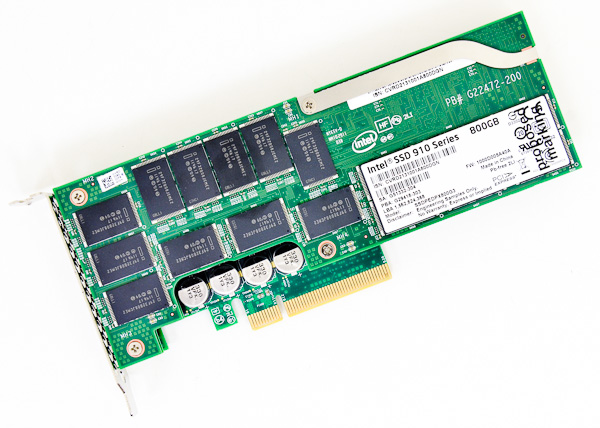
It took surprisingly long for Intel to dip its toe in the PCIe SSD waters. In fact, Intel's SSD behavior post-2008 has been a bit odd. To date Intel still hasn't released a 6Gbps SATA controller based on its own IP. Despite the lack of any modern Intel controllers, its SSDs based on third party controllers with Intel firmware continue to be some of the most dependable and compatible on the market today. Intel hasn't been the fastest for quite a while, but it's still among the best choices. It shouldn't be a surprise that the market eagerly anticipated Intel's SSD move into PCI Express. Read on for our full review of Intel's SSD 910, the company's first PCIe SSD.

More...
-
08-13-12, 10:00 AM #2094
Anandtech: ASUS P8Z77-V Premium Review: A Bentley Among Motherboards
In the car industry, there is a large variety of cars to choose from - both the cheap and the expensive will get you from A to B, but in various amounts of luxury, with different engines and features under the hood.  In comparison the motherboard industry, we have nothing like this - products are built to specifications and have to remain price competitive.  Very rarely do we get a price competitive motherboard with a ton of features that also stretches the wallet in the same way a luxury car might do.  For this analogy, we have the P8Z77-V Premium from ASUS to review, which comes in at $450 MSRP, but features Thunderbolt connectivity, dual Intel NIC (one server grade), an onboard 32GB mSATA SSD, a PLX chip for 4-way PCIe devices, onboard WiFi, Bluetooth, and extra SATA/USB ports. 

More...
-
08-13-12, 08:30 PM #2095
Anandtech: The AnandTech Podcast: Episode 1
Last Friday, Brian Klug, Ian Cutress and myself took an hour to discuss a lot of what was on our minds lately. At a high level we discussed building a new Ivy Bridge PC, Brian's picks for best Android smartphones on the market today and even talked a bit about the next iPhone. Go a bit deeper and we had discussions about SSDs, the changing PC landscape, Haswell and much more. 
This marks our first ever official AnandTech podcast. The plan is to regularly do more of these and my hope is to be able to rope in all of the AnandTech writers to spend some time on the mic. We're getting an RSS feed for the podcast setup but for now here are direct links to the first episode (mp3 and m4a formats) as well as an embedded player here if you want to get started immediately. The total play time is just over 1 hour (01:01:05) and that will likely be our target going forward. As always, comments are welcome and appreciated. Let us know what you liked, hated and want to hear more of.
 

More...
-
08-14-12, 03:32 AM #2096
Anandtech: The AMD FirePro W9000 & W8000 Review: Part 1
Despite the wide range of the GPU coverage we do here at AnandTech, from reading our articles you would be hard pressed to notice that AMD and NVIDIA have product lines beyond their consumer Radeon and GeForce brands. Consumer video cards compose the bulk of all video cards shipped, the bulk of revenue booked, and since they’re targeted at a very wide audience, the bulk of all marketing attention. But that doesn't mean they're the only video cards that matter.
Abutting the consumer market is the smaller, specialized, but equally important professional market that makes up the rest of the desktop GPU marketplace. Where consumers need gaming performance and video playback, professionals need compute performance, specialized rendering performance, and above all a level of product reliability and support beyond what consumers need.
This leads us to today’s product review: AMD’s FirePro W9000 video card. Having launched their Graphics Core Next architecture and the first GPUs based on it at the beginning of the year, AMD has been busy tuning and validating GCN for the professional graphics and compute markets, and that process has finally reached its end. This month AMD is launching a complete family of professional video cards, the FirePro W series, led by the flagship W9000.

More...
-
08-14-12, 10:30 AM #2097
Anandtech: AMD Announces New, Higher Clocked Radeon HD 7950 with Boost
August is not typically a busy time of the year for the GPU industry. But this is quickly turning out to be anything but a normal August. Between professional and consumer graphics cards we have a busy week ahead.
Kicking things off on the consumer side today, AMD is announcing that they will be releasing a new Radeon HD 7950 with higher clockspeeds. The new 7950, to be called the Radeon HD 7950, is a revised version of the existing 7950 that is receiving the same performance enhancements that the 7970 received back in June, which were the basis of the Radeon HD 7970 GHz Edition.

More...
-
08-14-12, 12:30 PM #2098
Anandtech: OWC Announces 480GB SSD Upgrade for MacBook Pro with Retina Display
In our review of the MacBook Pro with Retina Display I mentioned that the base $2199 configuration is near perfect, save for its 256GB SSD. With no room for internal storage expansion, you either have to be ok with only having 256GB of internal storage or pay the extra $600 for the $2799 model with a 512GB SSD (and faster CPU). Apple doesn't offer a storage upgrade on the $2199 configuration.
Today, as expected, OWC announced its 480GB Mercury Aura Pro upgrade for the Retina MacBook Pro. The SandForce SF-2281 based SSD is priced at $579.99, which actually doesn't save you much money compared to buying the upgraded configuration directly from Apple. OWC's route does offer a couple of benefits however: 1) customers who order before September 30th will receive a USB 3.0 enclosure that will let you use your old 256GB SSD as an external drive (the enclosure costs $60 separately, and you still get to use your 256GB SSD), and 2) if you've already purchased a 256GB rMBP and later discover that you need more storage simply buying the $2799 model isn't an option, making the Mercury Aura Pro a viable option.
A quick search of 480GB SF-2281 based drives reveals that many are still priced over $500, although it's still possible to get some drives at lower price points. NAND pricing tends to be highly volatile, not to mention the benefits that having a direct relationship with a fab offers, both of which contribute to the wide spread.
The other thing to keep in mind with any SF-2281 based SSD is the difference in performance between compressible and incompressible data. If you're running FileVault on your rMBP you will see lower performance from anything SandForce based compared to the standard Samsung PM830 used in the stock rMBP.
All of that being said, it's great to see OWC offer an upgrade path for the MacBook Pro with Retina Display. Pre-orders for the Mercury Aura Pro are available immediately, with first shipments going out on or around August 21.

More...
-
08-14-12, 01:30 PM #2099
Anandtech: Microsoft Reveals First Battery Life Specs for Windows RT Tablets
Yesterday Microsoft announced the final roster for ARM based Windows RT tablets expected to launch this year. We'll see Windows RT tablets from ASUS, Dell, Lenovo and Samsung, as well as Microsoft itself with Surface. Those who aren't listed either opted to go x86 exclusively (e.g. Acer) or simply won't have a Windows RT device in the first round. Microsoft is trying to exercise more control over its partners with Windows 8, with hopes of boosting the overall quality of launch devices. Powering these tablets will be NVIDIA's Tegra 3, Qualcomm's Snapdragon S4 or TI's OMAP 4 SoC. Thanks to ARMv7 ISA compatibility across all three SoCs, only a single build of Windows RT is needed to run across all Windows RT tablets.
The OS is final as of now, but there's still a lot of work being done on drivers. I don't expect to see anything resembling final drivers until early October. That being said, Microsoft did share a bit of early data about the first Windows RT tablets:
The only battery life specs that Microsoft shared unfortunately came with very little information. Thankfully MS specified the brightness setting (200 nits, oddly compatible with our own tablet battery life tests) but not the workload in particular. I added the 3rd gen iPad to the tablet above to draw a rough comparison, but with things like battery life it's difficult to make an accurate comparison without knowing all of the details from Microsoft's tests. The rest of the specs show a fairly wide range of devices, starting at something that's much thinner and lighter than the current iPad and going up all the way to something that's more notebook like.Windows RT Launch Tablet Specification Range   Min Max Apple iPad (2012) HD Video Playback at 200 nits 8 hours 13 hours 11.15 hours Connected Standby 320 hours 409 hours - Battery Capacity 25 Wh 42 Wh 42 Wh Screen Size 10.1-inches 11.6-inches 9.7-inches Weight 520 g 1200 g 652 g Length 263 mm 298 mm 241.2 mm Width 168.5 mm 204 mm 185.7 mm Height 8.35 mm 15.6 mm 9.4 mm
It's disappointing to see a lack of commentary on battery life stressing more than just the video decode logic on the SoC and display. I'm also interested to see how Atom based Clovertrail Windows 8 tablets stack up against these Windows RT devices in terms of battery life and performance. If Atom based Windows 8 tablets can deliver a comparable experience there, and are comparably priced (which seems to be the case based on what I heard at Computex), then the choice between RT and Atom based Windows 8 tablets may boil down to whether free Office or legacy compatibility matter more to you.

More...
-
08-15-12, 10:30 AM #2100
Anandtech: Live from Samsung's Galaxy Note 10.1 Launch
We just sat down at Samsung's Galaxy Note 10.1 US launch event. First announced at Mobile World Congress earlier this year, the Galaxy Note 10.1 brings Samsung's Note brand to a 10.1-inch tablet. The specs have changed a bit since the MWC announcement but stay tuned for the full US launch details.
Check back here for live coverage of the announcement which starts in just a few minutes!

More...
Thread Information
Users Browsing this Thread
There are currently 28 users browsing this thread. (0 members and 28 guests)




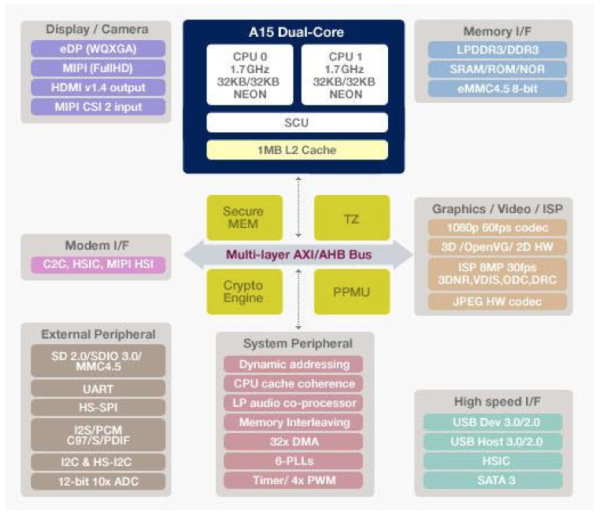

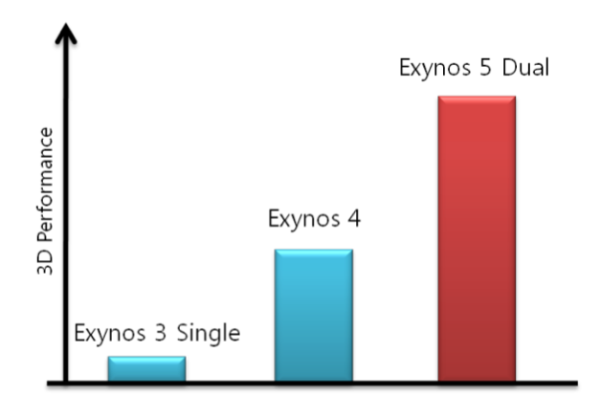



 Quote
Quote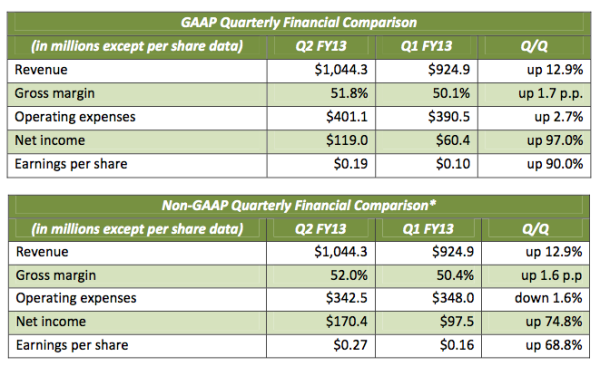


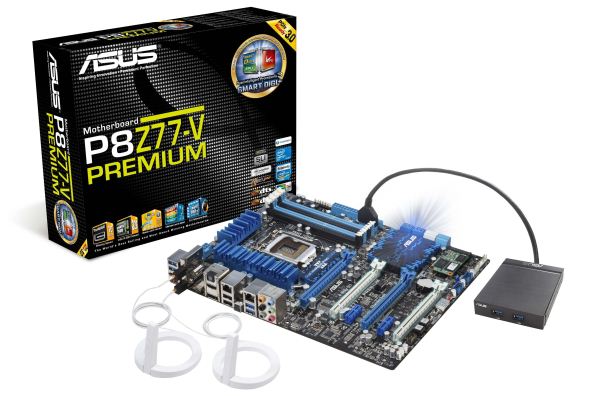

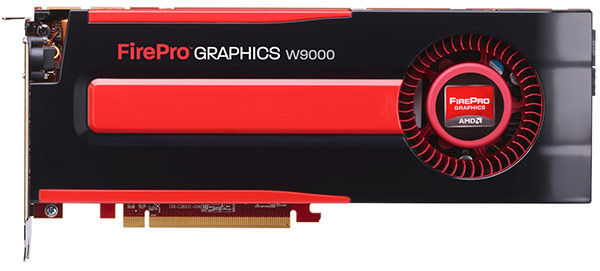
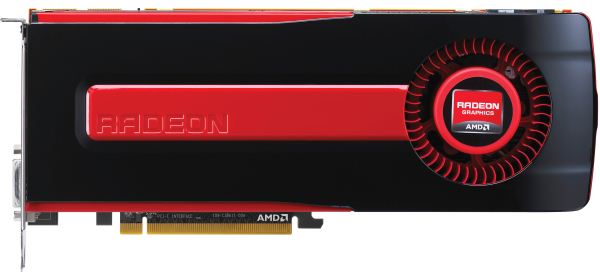
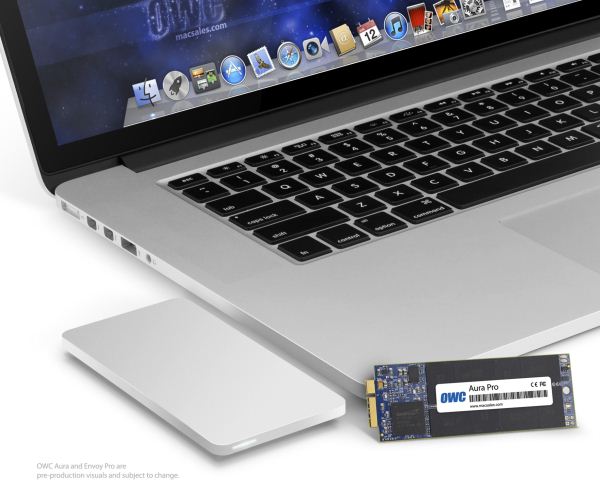
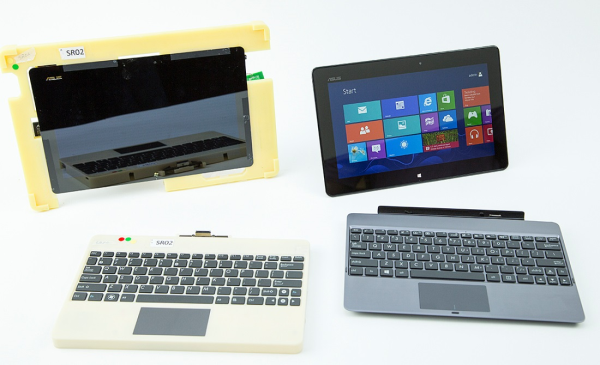
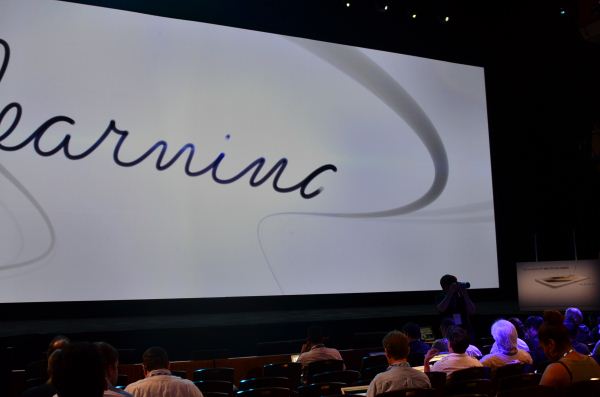
















Bookmarks